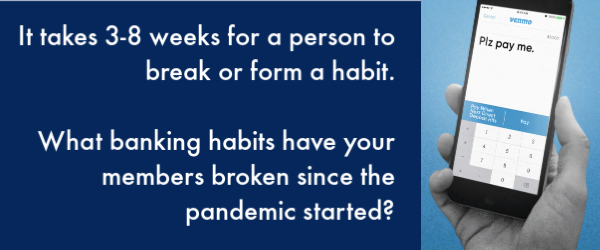The Game Has Changed. Should Your Core System Change too?
 When credit unions build their annual strategy for the coming year, it's often focused on looking at last year's plan and tweaking it for the future, what systems or services can they get more legs from, what will they need to consider upgrading for the future? This year is different. This year has upended everything in one fell swoop: branches shut down, employees worked remotely, members lost jobs and income, the market demanded immediate options for contactless payments and transactions. While many felt this year has been a setback, we see this year as a great opportunity to redefine the future.
When credit unions build their annual strategy for the coming year, it's often focused on looking at last year's plan and tweaking it for the future, what systems or services can they get more legs from, what will they need to consider upgrading for the future? This year is different. This year has upended everything in one fell swoop: branches shut down, employees worked remotely, members lost jobs and income, the market demanded immediate options for contactless payments and transactions. While many felt this year has been a setback, we see this year as a great opportunity to redefine the future.
Member Habits Have Changed
The impact of this pandemic is not temporary. There are broad estimates on how long it takes a person to break a habit or to form a new one, but the range is generally thought to be between three and eight weeks. At four months into this, and with no resolution in the near future, people have broken their old habits and are forming new ones.

For example, a member that used to deposit checks in-branch is likely now taking advantage of remote deposit. It is likely that the majority of your membership has now also had experience using person-to-person digital payments.
Credit unions can not create stop gap measures to just get through this. They need to adapt everything they do to a new standard, a new set of rules. While social distancing will eventually go away, member expectations are going to be permanently changed and smart organizations will plan accordingly.
One of the biggest changes that's occurred is how members interact with your credit union. While there is currently a huge shift to online and mobile banking, the branch will likely come back in some form. How will you adapt your in-branch experience? How will the role of your Member Services Representatives (MSRs) change?
As the habit of in-person banking has been broken, we need to take advantage of all of the ways we can "reach" a member without actually being in the same physical space. This is going to be a tremendous chance to launch any digital onboarding plans you may have been making or already started applying. Credit unions also need smart ways to gather and react to data from all touchpoints, both physical and digital.
Out with the Old
This is an opportunity to scrap last year's plan and build a brand new, future-focused one. This is going to require assessing where you are from the ground up, in branch and online, and determining where you need to aim to sustain and succeed in the future. It will take new strategies, policies, and innovations.
This is also an opportunity to stress-test your technology for the future. While we are starting to open back up in earnest, who knows what the next year will bring? Your CU needs to have a plan that can adapt to all scenarios. How much longer do you have left on your core processor contract? Does it have the features you need in order to provide the services your members know and expect? Are your operations as efficient as they can be? Determine your goals and the Key Performance Indicators (KPIs) that will allow you to measure your progress towards them. For a refresher on your most critical KPIs, download our eBook.
Having the Tools to Make the Change
Finding the tools and technologies that can support your new path will be critical to your success. To make these sweeping changes effectively, you need a robust core system that offers third-party integrations and member-focused services your members demand. Your core system must also provide the functionality that your CU needs to serve members in the most personalized way possible. You also want to be certain that your core provider will continue to innovate.
Members want simple digital engagement, intuitive mobile banking apps, insights into their pain points, and suggestions of the best next steps towards a more secure financial future. They want to feel in control and you can enable that by providing the resources they need to find the information they want. They want to be recognized in real-time, to feel their credit union knows them and anticipates their needs. They want to be both educated and empowered. Now is the time to build a strategy, and a core system architecture, that supports those needs.



